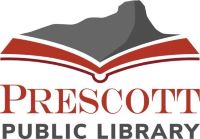Published
Ann Arbor, Mich. : ProQuest LLC, 2017.
Format
Book - Regular Print, Online Content
Notes
General Note
ProQuest Number: 10277933.
General Note
Advisor: Pramod Parajuli.
General Note
Submitted in partial fulfillment of the requirements for the degree of Doctor of Philosophy in Sustainability Education from Prescott College.
Dissertation
Dissertation (Ph. D.),Prescott College,2017.
Bibliography
Includes bibliographical references (leaves 328-347)
Description
"Adventure is a relic of imperialism and the European romanticization of place. It has evolved from quests for domination of place and people (colonialism), to spiritual or consumeristic escape from the modern world, to an attempt to return or reconnect to nature. This paradigm implies that if humans must reconnect to nature, there is an inherent disconnect or a separation. This reconnection is rooted in romantic notions and Cartesian duality of man and nature. However, approaches towards adventure and tourism apart from such dominant Western mountain traditions focus on the critical and contextually based aspects of adventure experiences. These approaches, informed by indigenous meanings of place, traditional ecological knowledge, and ecofeminism, decenter human experience. Likewise, a feminist new materialist approach towards understanding place and materiality also allows for an awareness of entanglements and intra-active relationships of human and more-than-human to emerge, as did this research."--leaf ii.
Description
"This dissertation examined place in the context of adventure trekking tourism in the upper Solukhumbu District, Nepal through a walking ethnography of the trails in and around Mount Everest base camp. This research was based on the following questions: 1. How can the future of development of Nepali Himalayan adventure tourism industry move forward ethically and with reciprocity towards the interconnectivity of mountains and people; 2. How can the adventure tourism industry consider the complexities of influence on a place--from both a direct impact and that of greater anthropogenic impacts? This research was grounded in the background and orientations of Everest tourism, which developed within discourse and materiality of Khumbu, shifting with local identities and meanings of place. Tourism in this context mangles in the edges of local and global cultures looming within immanent threats of the Anthropocene. Discourse composed and idealized from outside the mountain boundaries contributes to motivations for traveling to the Khumbu and perceptions of this place, in turn shaping the expectations of the tourist. In these contact zones mountains are sacred, a business venture, a personal challenge, place of revelation and spirituality, imperial conquest, neocolonial stomping ground, to scientific object of study. Within these complexities, this dissertation examined the concept of place and how meaning and agency develop in relation to adventure tourism experiences in Khumbu and the Anthropocene. A reciprocity develops in which human amongst more-than-human becomes embedded and inseparable. Shifting an anthropocentric gaze that privileges and sets matter apart as isolated and constrained by boundaries determined by humans, demonstrated the vibrant agential reality of more-than-human intimacies such as forgotten landscapes, rocks, dirt, glaciers, and altitude. Nature is not a passive object upon which humans descend, but rather an entangled subjectivity. This awareness allows for a rethinking of human enactments of Anthropocene and complicit behaviors of this epoch, reframing approaches to adventure. The conclusions of this research found that mountains--more-than-human--have agency and meaning and are not passive or in the background of human experience. This applies to a practical application of the research through a praxis tool for new materialist research and the adventure industry, in turn decentering the human/anthropocentrism and identified practices of tourism that are both sustainable and more inclusive of the entanglements of people and place."--leaf ii-iii.
Additional Physical Form
Also available in an electronic form.

